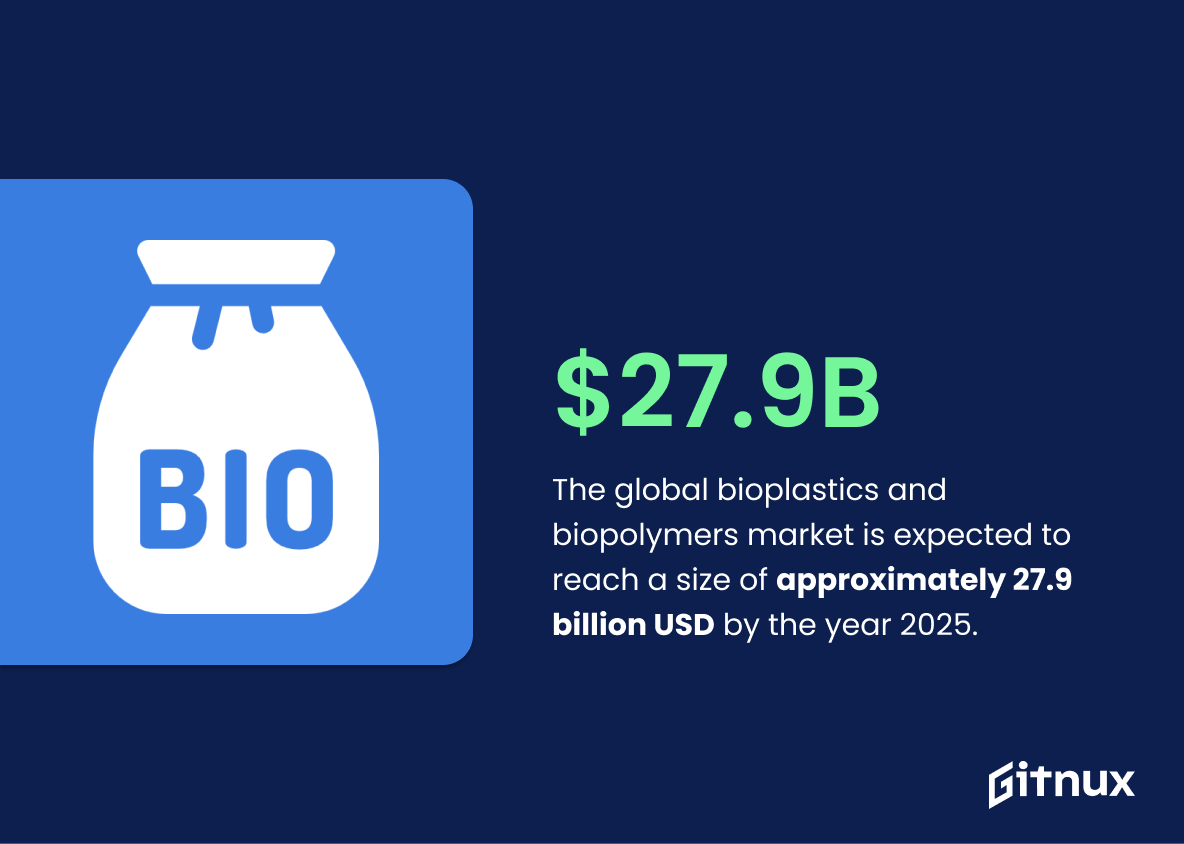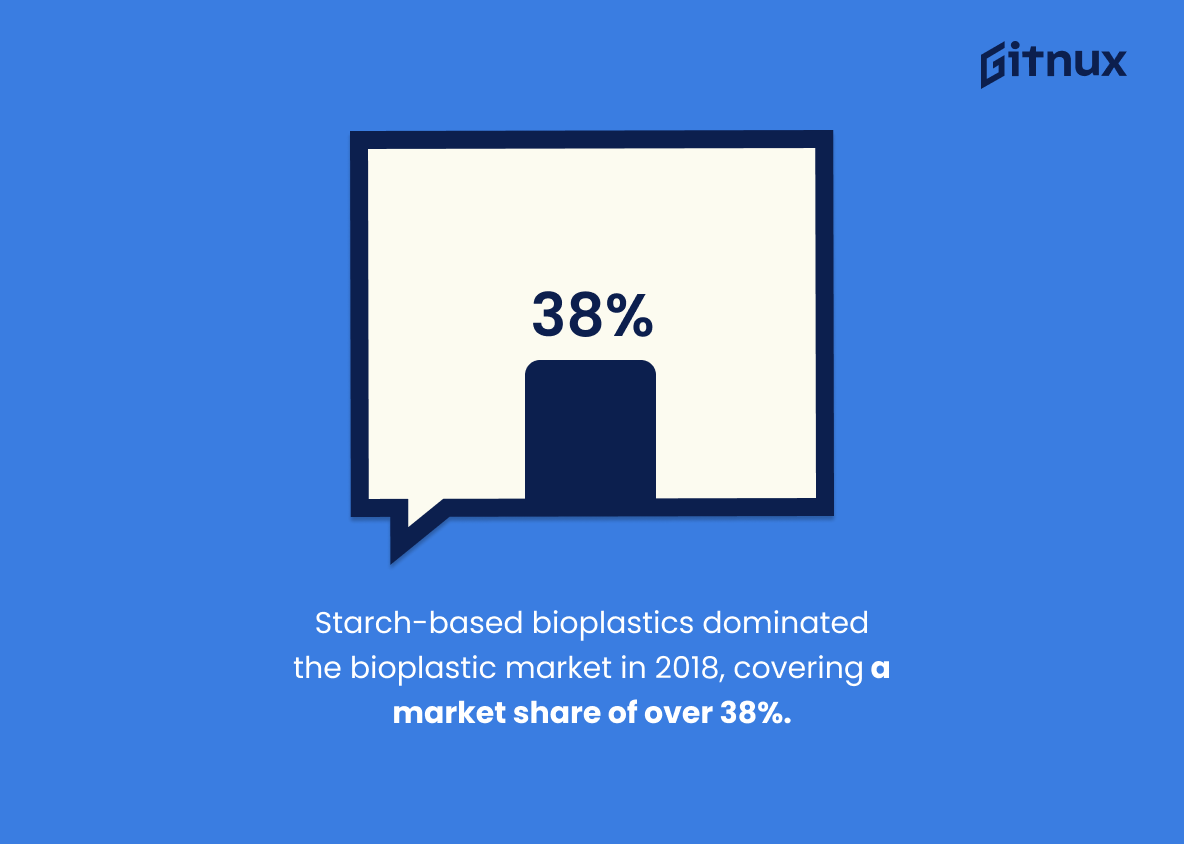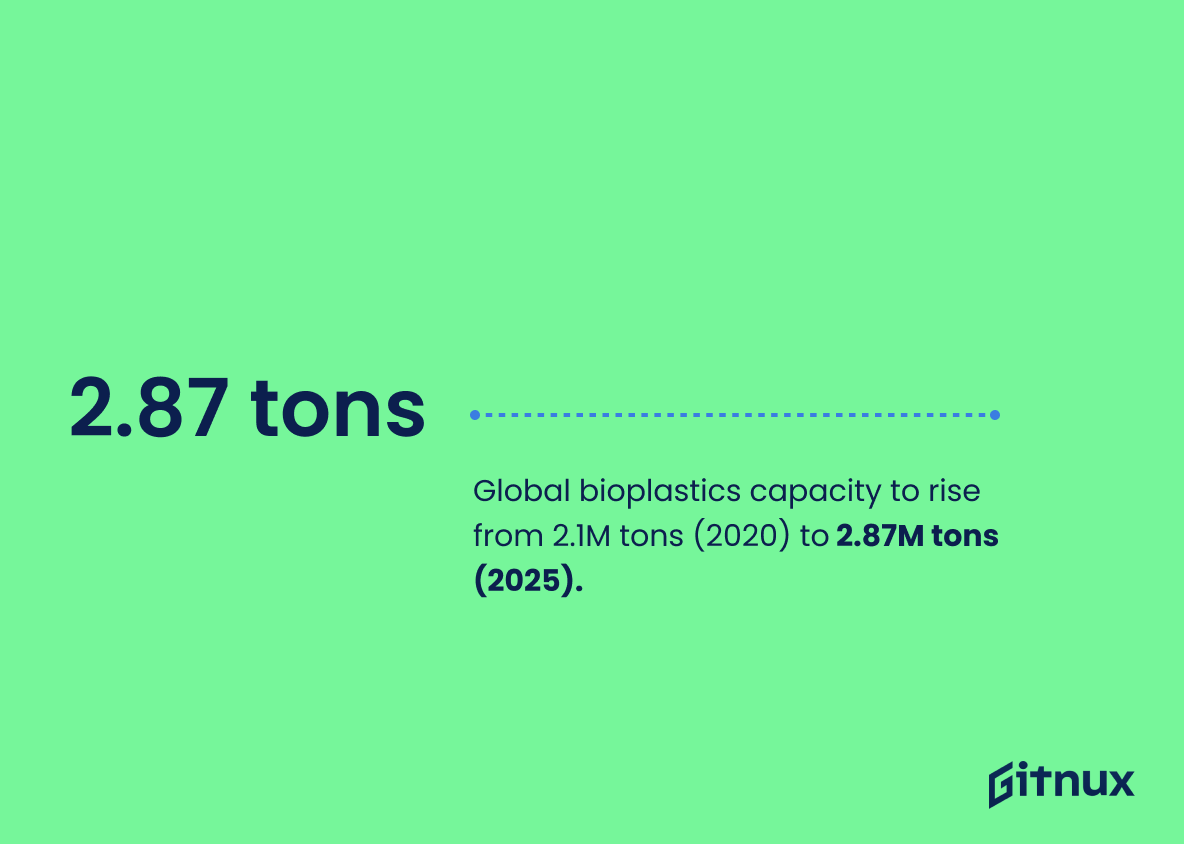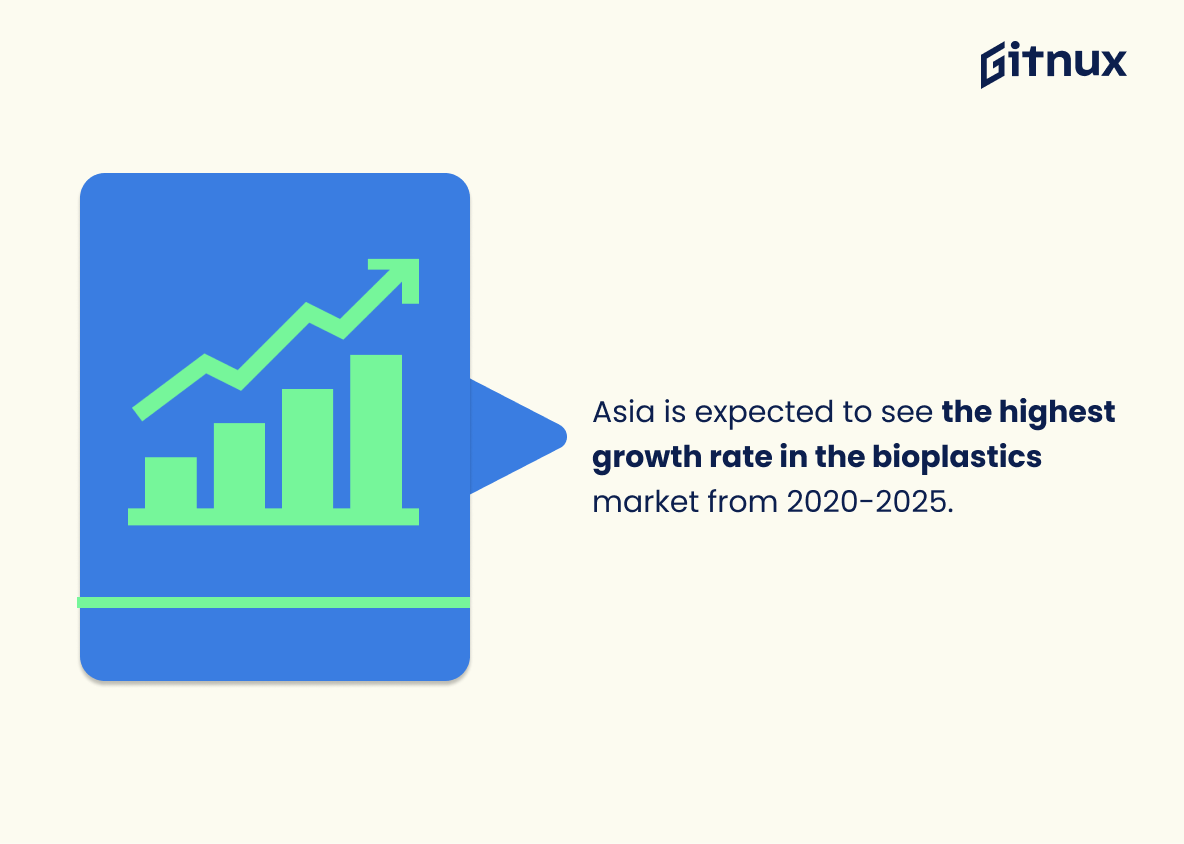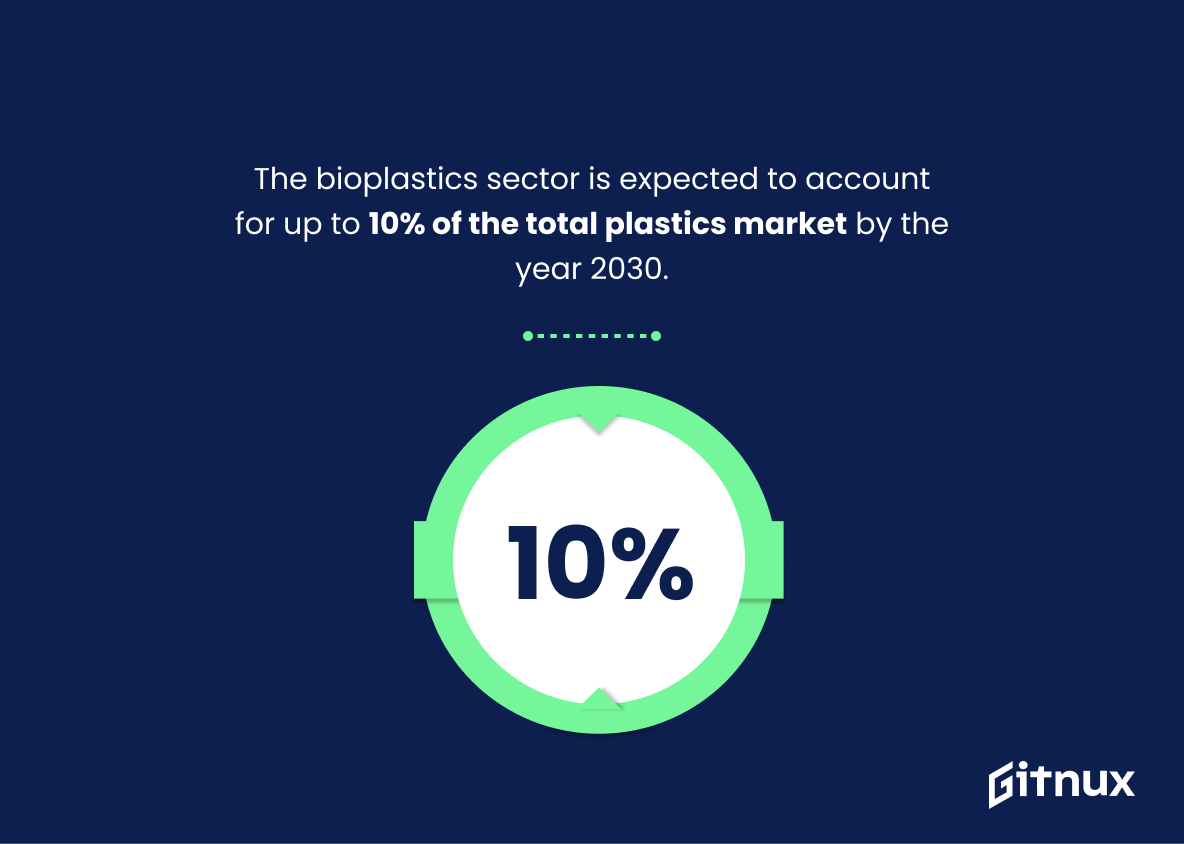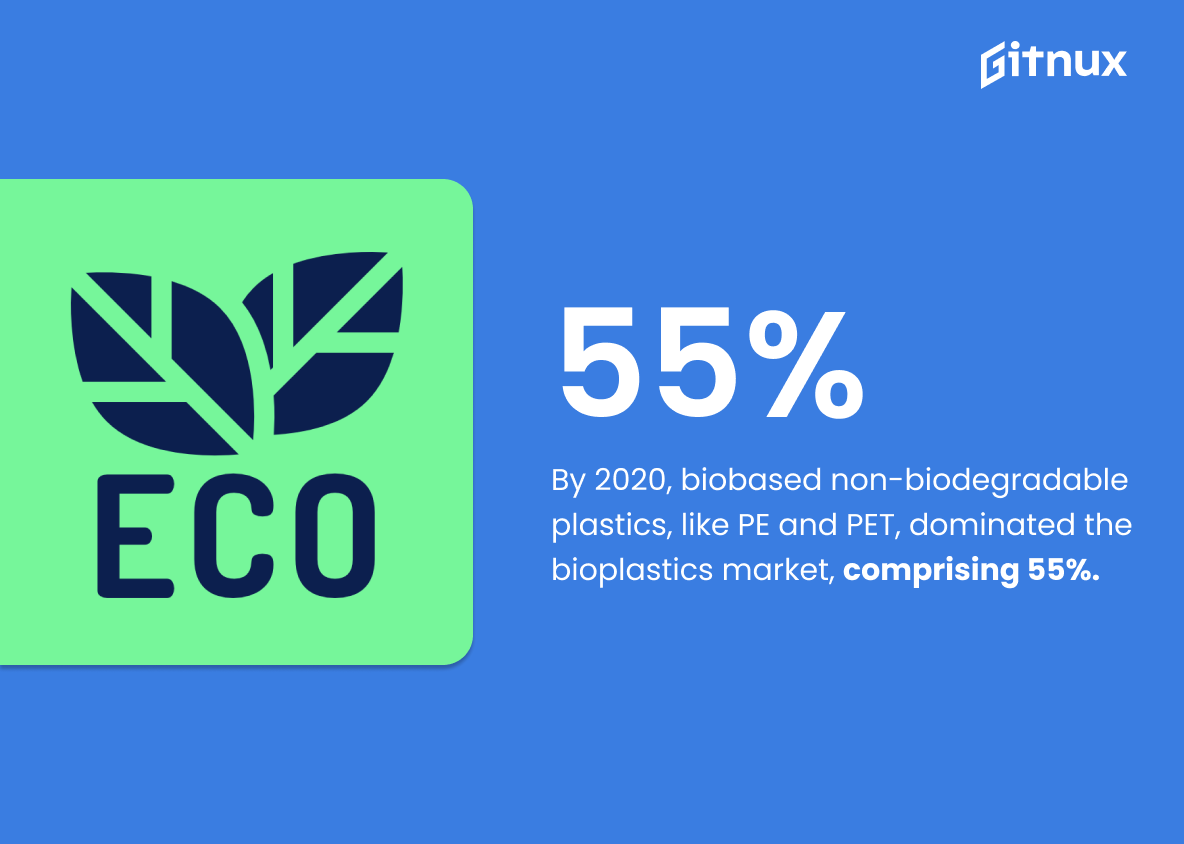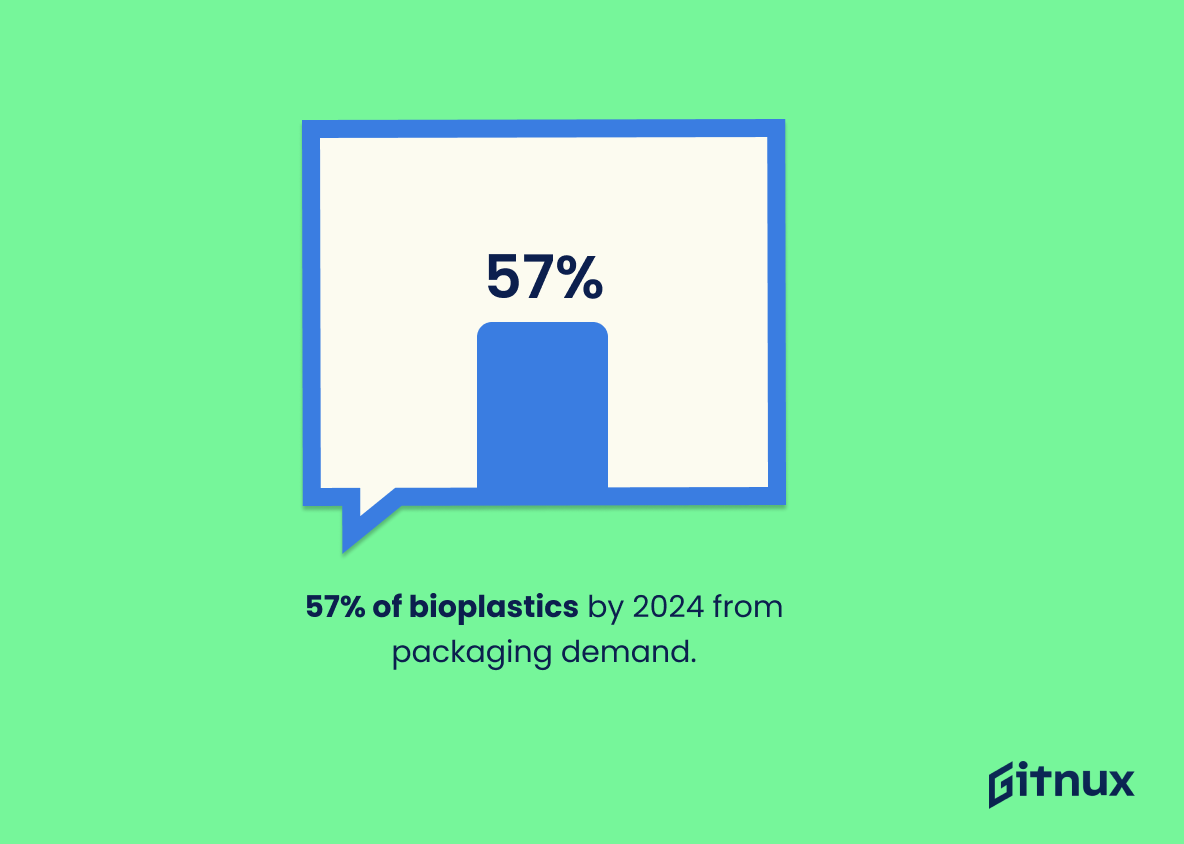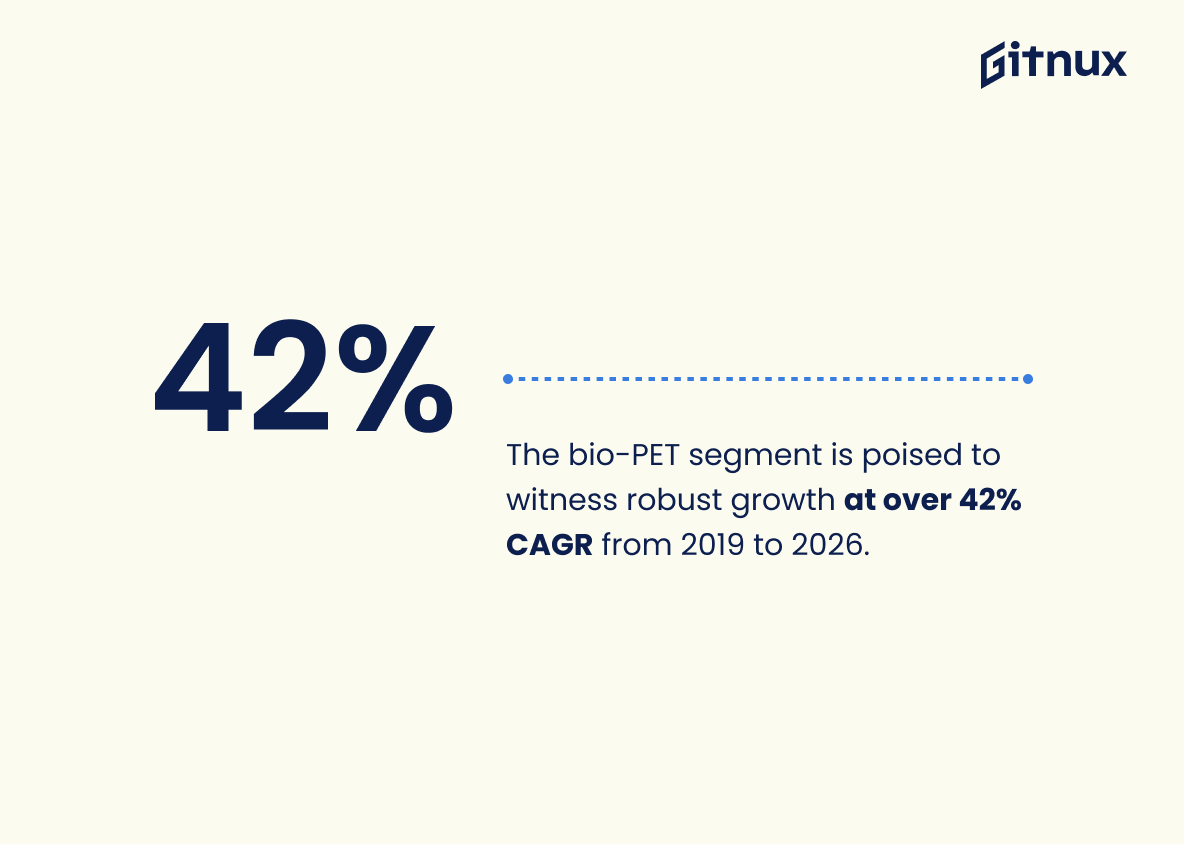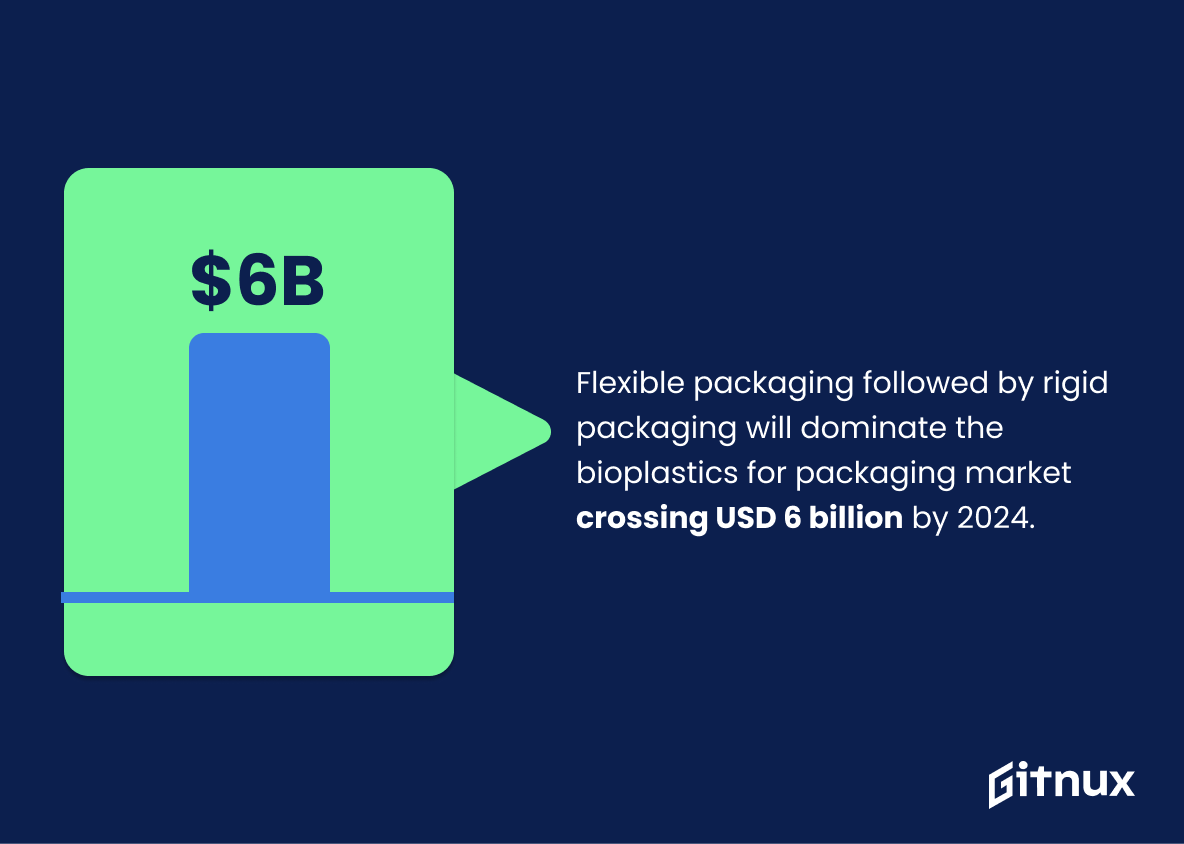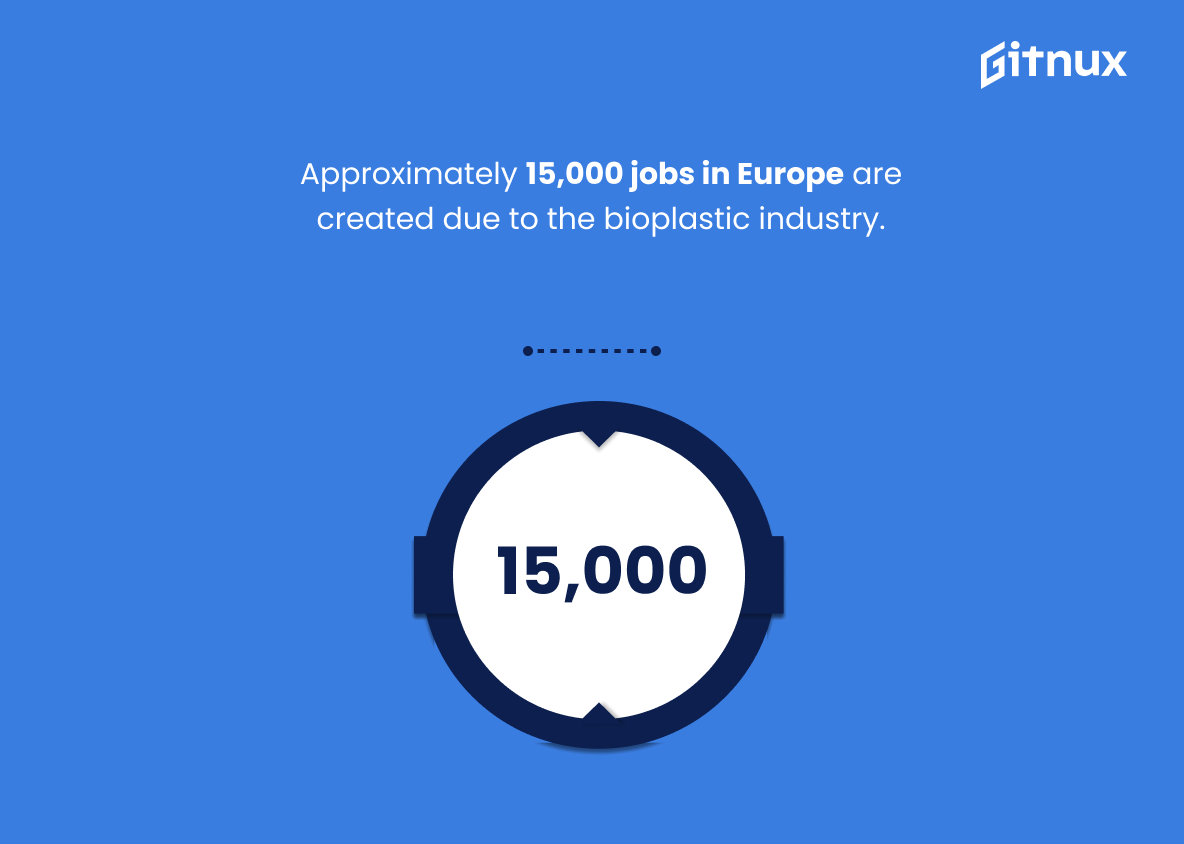Step into the world of sustainability with this deep dive into the burgeoning bioplastics industry. As the global community continues to rally around environmental initiatives, the bioplastics sector has emerged as a beacon of innovation. Offering a greener alternative to traditional petroleum-based plastics, bioplastics are fuelling an industry revolution – one that merges profitability with environmental stewardship.
With the demand for sustainability on the rise, the bioplastics market has experienced unprecedented growth and transformation. This blog post will unravel the fascinating world of bioplastics, underpinned by the most recent industry statistics. Strap in for an eye-opening journey through numbers, charts, trends, and projections defining the future of the bioplastics industry. The evolution of plastic starts here.
The Latest Bioplastics Industry Statistics Unveiled
The global bioplastics and biopolymers market is expected to reach a size of approximately 27.9 billion USD by the year 2025.
Consider the forecasted expansion of the bioplastics and biopolymers market to 27.9 billion USD by 2025 as a key indicator of the industry’s thriving future. Not only does this projection illustrate the increasing economic weight of bioplastics, but it also echoes the intensifying global demand for more sustainable solutions.
In a world pivoting towards eco-conscious decisions, these numbers hint at the vast opportunities, potential for innovation, and prospective growth within the bioplastics industry, all of which are valuable insights for anyone delving into Bioplastics Industry Statistics.
Starch-based bioplastics dominated the bioplastic market in 2018, covering a market share of over 38%.
Highlighting the dominance of starch-based bioplastics in the market in 2018 with a commanding 38% share offers a crucial viewpoint into the prevailing trends of the bioplastics industry. It illuminates the strong market preference and the apparent market potential starch-based bioplastics held during that period. This, in turn, could serve as a decisive compass, guiding future strategies and decisions for industry players and market entrants alike while crafting out innovation and growth trajectories.
The global production capacity of bioplastics is projected to grow from around 2.1 million metric tons in 2020 to approximately 2.87 million metric tons in 2025.
Highlighting this striking statistic in a blog post about Bioplastics Industry Statistics would underscore the burgeoning future and potential that bioplastics hold. The forecasted growth from 2.1 million metric tons in 2020 to an impressive 2.87 million metric tons by 2025 indicates a burgeoning manufacturing trend in the bioplastics sector. It not only illustrates the industry’s resilience but also underlines the increasingly significant role bioplastics are set to play in meeting worldwide plastic demand in an eco-friendlier way.
Furthermore, from an economic perspective, this expansion in production capacity suggests that investments within the bioplastics industry will likely yield considerable returns, thereby attracting stakeholders and investors. Thus, this factual nugget is a beacon for market development, investment potential, and sustainability strides.
Asia is expected to see the highest growth rate in the bioplastics market from 2020-2025.
Painting a picture of what’s to come, this forecast positions Asia at the forefront of the bioplastics revolution between 2020 and 2025. It’s not just a number, it sets the stage for a broader narrative highlighting Asia’s growing influence within the global bioplastics industry. This prediction speaks to the potential profit opportunities in the Asian market, the changing paradigms in manufacturing strategies and the upcoming shifts in global supply chain dynamics.
It provides insight into the market trends, influencing investment decisions, shaping policy-making, and sparking innovation for stakeholders in the bioplastics industry. In essence, this statistic entices readers to look at Asia through the lens of untapped potential in the bioplastics industry, paving the path for future developments in the sector.
The bioplastics sector is expected to account for up to 10% of the total plastics market by the year 2030.
Forecasting a shift towards bioplastics to encompass 10% of the entire plastics market by 2030 illustrates a significant watershed moment in industrial evolution. Not only does this predict an escalating growth within the sector, it also accentuates the emerging societal and business preference for more sustainable and environmentally friendly products.
This surge of interest in bioplastics could profoundly influence manufacturing practices and investment trends, thereby sculpting a new landscape for the industry. Suffice to say, surf the wave or be swept by it, the field of bioplastics is set to make waves that will ripple across the entire plastics market.
The production of biobased, non-biodegradable plastics, including biobased polyethylene (PE) and biobased polyethylene terephthalate (PET), is currently (2020) the largest group in the global bioplastics market, making up around 55% of the total bioplastics market.
Highlighting the statistic about the 55% market dominance of biobased, non-biodegradable plastics like biobased PE and PET, is a compelling way to conjure the magnitude and sway of these products in the global bioplastics arena. Strongly rooted within this number is the unspoken narrative of a morphing industry, geared towards the acceptance and mainstreaming of these biobased, non-biodegradable plastics. Indeed, it’s the figurative heartbeat of the bioplastics market, pumping the lifeblood of such high demand products and shaping the rhythm of the industry.
As one delves deeper into bioplastics industry statistics, this particular statistic adds depth and perspective, providing a keen understanding of prevailing market trends and influencing factors in this burgeoning industry. From supply chain mechanisms to consumer choice dynamics – this numerical silo weaves its threads through the complex tapestry of the bioplastics industry.
Global demand for bioplastics is primarily driven by the rigid packaging sector, accounting for 57% of global bioplastics production by 2024.
Uncovering significant trends in the bioplastics industry is comparable to putting together a complex puzzle – every piece has its bit to play in creating a complete picture. The statistic about how rigid packaging dominates demand by constituting 57% of global bioplastics production by 2024 illustrates a compelling narrative. It does not merely indicate which sector leads the charge in driving demand, but it also highlights the very nature of bioplastics application in various industries.
Thus, it serves as a crystal ball that allows readers to envisage and comprehend where most of the bioplastics are likely to be consumed in the near future. For anyone following the bioplastics industry or for potential investors, this offers valuable foresight into potential growth areas and can be the compass guiding strategic business decisions.
The bio-PET segment is poised to witness robust growth at over 42% CAGR from 2019 to 2026.
The aforementioned statistic paints an exhilarating portrait of the untapped potential within the burgeoning bioplastics industry. Imagine the bio-PET segment, racing ahead at a staggering 42% CAGR (Compound Annual Growth Rate) from 2019 to 2026. It’s akin to a dark horse, casting shadows of promising opportunities on the path ahead.
This robust growth, much like a lighthouse, guides attention to significant advancements in manufacturing technology, shifts in market demand, and promising investment channels within the bioplastics industry. In essence, this compelling figure not only underscores the dynamism in the bio-PET marketspace, but also offers a tantalizing glimpse into the future, forecasting a landscape that’s ripe with innovation, progression, and profitability.
Flexible packaging followed by rigid packaging will dominate the bioplastics for packaging market crossing USD 6 billion by 2024.
Unearthing the layers of implication behind this statistic, we find it serves as a harbinger of future trends and directions in the bioplastics industry. The bioplastics sector is experiencing dynamic evolution and this detailed insight provides crucial market segmentation, enabling stakeholders, policy makers, investors, and even consumers to tap into the potential of the industry.
The extraction of the fact that flexible packaging, shadowed by rigid packaging, is tipped to lead the market beyond a valuation of USD 6 billion by 2024 brings forth the highly influential role of packaging in the industry’s growth. It hints towards the industry’s response to the mounting demands for environmentally friendly and flexible packaging solutions, creating an overture for more sustainable productions lines, investment opportunities, and policy priorities.
Additionally, the predicted sizeable monetary expansion of the market serves as both an indicative and motivating factor for readers. It signals a growing acceptance and adoption of bioplastics across a wide spectrum of industries, underlining the strength and opportunities in this market space, which could stimulate more discussion, research, and interest around bioplastics.
The statistic, therefore, acts as a strong anchor within the contextual framework of the industry’s wider data panorama, painting a scenario of growing demand, innovation and profitability in the bioplastics landscape. It’s like a compass pointing towards the lucrative horizons of the bioplastics industry.
Approximately 15,000 jobs in Europe are created due to the bioplastic industry.
Delving into this peculiar figure reveals a fascinating story of growth and promise – a herald of approximately 15,000 employment opportunities sprung from the bioplastics industry in Europe. This isn’t just a number, it’s an indicator of economic vitality, showcasing how the bioplastics sector is firmly planting its roots not merely in the manufacturing world, but also within the job market.
What we’re witnessing is the birth of a cycle where environmental innovation hand in hand with human ingenuity reaps a dual reward: environmental sustainability and job creation. Quite profound, isn’t it? This twofold impact magnifies the significance of the bioplastics industry, placing it as a pivotal player in Europe’s quest for a greener economy and increased employment. Thus, it’s more than just a statistic – it’s a tale of ecological innovation fostering economic growth.
The bioplastics market in Japan was valued at USD 577.7 million in 2017 and is expected to exhibit a growth rate of 18.3% during the forecast period 2018-2026.
Highlighting the robust growth of Japan’s bioplastics market—from a valuation of USD 577.7 million in 2017, with a projected stellar growth rate of 18.3% from 2018 to 2026—offers a profound glimpse into the burgeoning industry’s potential. Such a rapid pace of advancement not only underscores Japan’s commitment to sustainable materials, but it also signals the country’s significant role in shaping the global trajectory of the bioplastics industry.
By mentioning Japan’s specific growth rate, the blog post emphasizes the international importance of bioplastics, hinting at their potential economic impact, while inspiring investors and innovators to contribute to the industry’s evolution.
Biodegradable plastics make up about 1% of the approximately 350 million metric tons of plastic produced annually.
In the realm of bio-plastics industry statistics, a nugget of information serves to magnify the stark reality we currently live in – only a minuscule pie slice, about 1%, of the gargantuan plastic mass, pegged at an inconceivable 350 million metric tons produced annually, is actually biodegradable. This looming imbalance not only reveals the immense potential for growth and expansion in the bio-plastics realm, but it also whispers a tale of urgent necessity.
The compelling narrative painted by these figures leads us to a crossroads, where sustainability and industrial practices meet, thereby showcasing the critical role the realm of biodegradable plastics play. It serves as an awakening call for industry insiders, environmentalists, and consumers alike, emphasizing the growing need for transitioning to sustainable solutions like bio-plastics to ensure the health of our planet.
The production of bioplastics in North America was approximately 0.32 million metric tons in 2019.
Indicating the bioplastics production in North America at approximately 0.32 million metric tons in 2019 opens up a factual landscape essential in understanding the positioning of this industry regionally and globally. It’s a critical waypoint measuring the industry’s pulse; it reveals North America’s contribution to global bioplastics production, an industry that is fundamentally shaping our materials economy. Further, it is a numerical marker that paints a picture of the industry’s past performance, which could potentially forecast its future trajectory, influencing decision-making for investors, policymakers, and industry stakeholders.
In agriculture, PLA is the dominant type of bioplastic with a market share of about 59.8% in 2019.
Highlighting the commanding grip of PLA (Polylactic Acid) in the bioplastics sector underpins its acclaimed status and prevalent adoption in the agricultural field. With a market share of 59.8% in 2019, it underscores its position as the industry’s dominant type of bioplastic.
Significantly, this statistic greatly illuminates the potential growth, demand, and development of PLA in the ever-evolving bioplastics industry. Moreover, it prompts readers to delve deeper into understanding the reasons behind PLA’s significant edge over other bioplastics, making it central to discussions and predictions about advancements in bio-based materials.
China is projected to be the fastest-growing country in the Asia-Pacific bioplastics market during 2020-2025.
Highlighting the projected acceleration of China within the Asia-Pacific bioplastics market from 2020 to 2025 is a bold indicator of the shifting landscape of the bioplastics industry. It dramatically underscores China’s potency in becoming a key player in this sector, potentially restructuring regional industry dynamics and nudging stakeholders to recalibrate their strategies or seek fresh opportunities.
Furthermore, it presents a piercing narrative of the burgeoning influence of emerging economies in the global bio-plastic market, setting the stage for a domino effect on sustainable policies, industry innovation, and even consumer behavior.
According to a study, the global automotive bioplastics market is forecasted to reach around USD 73.9 billion by 2026.
Commencing on an impressive note, the predicted ascent of the global automotive bioplastics market to a staggering sum of approximately USD 73.9 billion by 2026 epitomizes the riveting potential of this flourishing industry. The projected figures not only illuminate the economic significance behind bioplastics, but they also underscore the industry’s role as a frontrunner in eco-friendly innovations.
The steep surge forecasted in the automotive niche of this sector reveals the extent of integration and acceptance of bioplastics in influential industries. In an era where sustainability and cutting-edge developments are key, these monetary estimations supply compelling evidence of the bioplastics industry’s position at the intersections of profitability, ecological responsibility, and technological advancement.
Polylactic acid (PLA) is expected to record the fastest revenue growth rate of 16.3% from 2020 to 2027 from the bioplastics market.
Unpacking the statistic reveals a compelling narrative about the star performer in the bioplastics industry – Polylactic acid (PLA). Its forecasted revenue growth rate of 16.3% from 2020 to 2027 is a testament to its rising popularity and demand. For industry stakeholders, investors, and readers, this trend casts a promising light on PLA’s future market potential.
Harnessing this growth wave in their investment or business strategies could possibly yield substantial returns. Furthermore, these figures underline a significant market shift as eco-conscious consumers gravitate toward sustainable alternatives. Therefore, the growth of PLA doesn’t just paint a picture of shifting industry trends, it also signals a larger societal shift towards environmental responsibility.
France’s share of bioplastics production capacity in Europe in 2019 was around 2%, making it one of the smallest producers in the region.
Delving deeper into the bioplastics industry data, we find a notable point of interest in the modest share coming from France. Holding just 2% of Europe’s bioplastics production capacity in 2019, France appears to be an understated player in the region.
This observation serves as a mirror, reflecting an intriguing aspect of the industry’s composition and sparking curiosity about the factors constraining growth in France. Moreover, to comprehend the potential and direction of the European bioplastics sector more fully, scrutinizing not only the heavyweights but also these smaller contributors offers a more nuanced perspective.
Conclusion
In summary, the bioplastics industry is on an upward growth trajectory, spurred by increasing awareness of environmental concerns and advancements in technology. The statistics reflect a sector that is responding to pressing global needs for sustainability and waste reduction. As the industry continues to innovate and expand its product offerings, bioplastics are poised to be a transformative force in various sectors, including packaging, agriculture, and automotive among others.
The future for the bioplastics industry appears promising, filled with immense potential for economic growth and environmental salvation. It will be interesting to observe and participate in the revolutionary wave of change that the industry is set to bring about in the coming years.
References
0. – https://www.www.statista.com
1. – https://www.www.marketsandmarkets.com
2. – https://www.www.bioplasticsmagazine.com
3. – https://www.www.european-bioplastics.org
4. – https://www.ihsmarkit.com
5. – https://www.www.nova-institute.eu
6. – https://www.www.grandviewresearch.com
7. – https://www.www.alliedmarketresearch.com
8. – https://www.www.gminsights.com
9. – https://www.www.researchandmarkets.com
